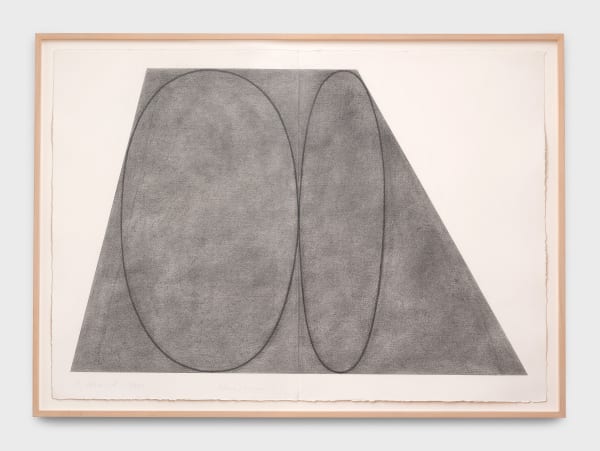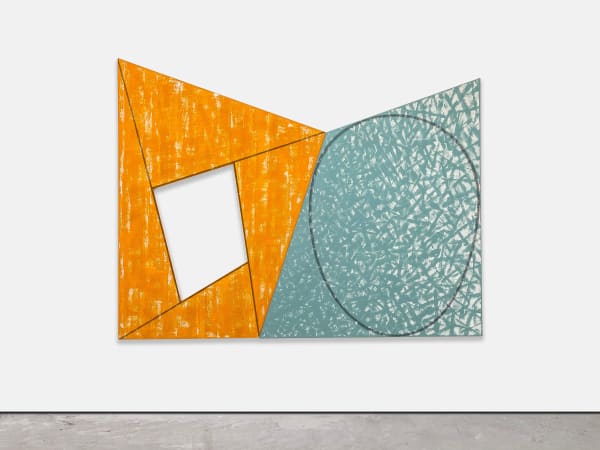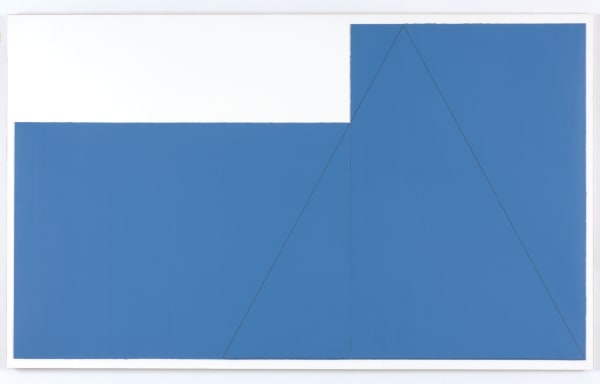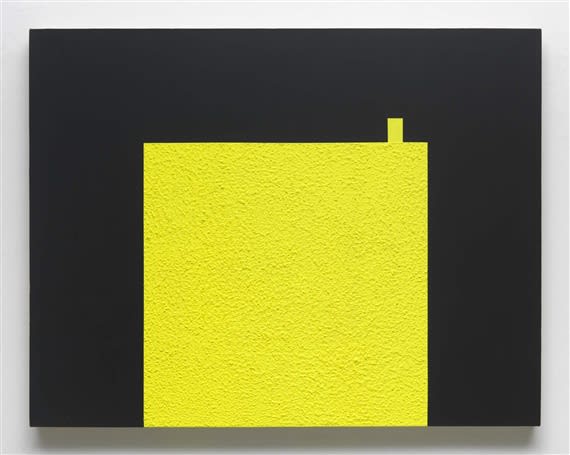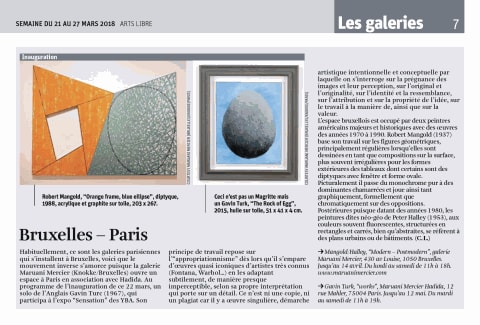I like setting up problems for the viewer, like how do you visually deal with a ring when what's usually in the center of a painting is very important? It's like the main course isn't there and you're having to deal with everything around what would normally be the main course.
Derived from the idea of geometry and asymmetry in shape and form, Robert Mangold's works challenge the limits of the two-dimensional medium.
I am attracted to generic or 'industrial' colors; paper bag brown, file cabinet gray, industrial green, that kind of thing.
-
 Robert MangoldDouble Line Column Study, 2005pastel and pencil on paper76.83 x 56.5 cm
Robert MangoldDouble Line Column Study, 2005pastel and pencil on paper76.83 x 56.5 cm
30 3/16 x 22 3/16 in
-
 Robert MangoldColumn Painting 8A (Dark Red Study), 2003acrylic and pencil on canvas228.6 x 57.5 cm
Robert MangoldColumn Painting 8A (Dark Red Study), 2003acrylic and pencil on canvas228.6 x 57.5 cm
90 x 22 5/8 in.
-
 Robert MangoldBrown / Gray Zone Drawing, 1996acrylic graphite and black pencil on paper76.8 x 167.6 cm
Robert MangoldBrown / Gray Zone Drawing, 1996acrylic graphite and black pencil on paper76.8 x 167.6 cm
30 3/16 x 65 15/16 in
Framing Dimensions: 85 x 178 x 5.5 cm
-
 Robert MangoldBrown/Gray Zone Painting V, 1996acrylic and black pencil on canvas228.6 x 503.6 cm
Robert MangoldBrown/Gray Zone Painting V, 1996acrylic and black pencil on canvas228.6 x 503.6 cm
90 x 198 4/16 in
Brown/gray zone painting crate :
-1/2 184x224x12,5 cm
-2/2 184x224x17,5 cm
-
 Robert MangoldOrange frame, blue ellipse (diptych), 1988acrylic and graphite on canvas203.2 x 266.7 cm
Robert MangoldOrange frame, blue ellipse (diptych), 1988acrylic and graphite on canvas203.2 x 266.7 cm
80 x 105 in
-
 Robert MangoldRed Ellipse/Red Frame, 1987acrylic and graphite on canvas241 x 335 cm
Robert MangoldRed Ellipse/Red Frame, 1987acrylic and graphite on canvas241 x 335 cm
94 14/16 x 131 14/16 in
-
 Robert MangoldUntitled #6 (green), 1986Acrylic and graphite on paper signed titled and dated R Mangold 1986 # 6 on the reverse76 x 56 cm
Robert MangoldUntitled #6 (green), 1986Acrylic and graphite on paper signed titled and dated R Mangold 1986 # 6 on the reverse76 x 56 cm
29 14/16 x 22 1/16 in
-
 Robert MangoldUntitled (yellow-orange), 1986Acrylic and graphite on paper signed and dated R Mangold 1986 lower left76 x 56 cm
Robert MangoldUntitled (yellow-orange), 1986Acrylic and graphite on paper signed and dated R Mangold 1986 lower left76 x 56 cm
29 14/16 x 22 1/16 in
-
 Robert MangoldPainting for Three Walls #3 (brown - final version), 1979acrylic graphite on paper100 x 137.5 cm
Robert MangoldPainting for Three Walls #3 (brown - final version), 1979acrylic graphite on paper100 x 137.5 cm
39 5/16 x 54 2/16 in
Framing Dimensions: 108 x 148 x 4 cm
-
 Robert MangoldA Triangle within two Rectangles N° 4 (on 2 sheets) (bleu), 1977acrylic and crayon on paper99 x 170.5 cm
Robert MangoldA Triangle within two Rectangles N° 4 (on 2 sheets) (bleu), 1977acrylic and crayon on paper99 x 170.5 cm
38 15/16 x 67 2/16 in

John Armleder, Donald Baechler, Ross Bleckner, Peter Halley, Sol Lewitt, Robert Mangold, Allan McCollum, Peter Saul, ...
1986 29.10.2020 - 5.01.2021Gallery | BrusselsIn the history of the United States, the year 1986 is remarkable for its major developments in science, technology and mass culture, marking a period of breakthrough and upheaval. IBM...Read more
Modern I Postmodern
Peter Halley - Robert Mangold28.02 - 7.04.2018Gallery | BrusselsRobert Mangold and Peter Halley have developed an artistic vocabulary derived from the idea of geometry and asymmetry in shape and form. They explore both the physical and psychological structures...Read more
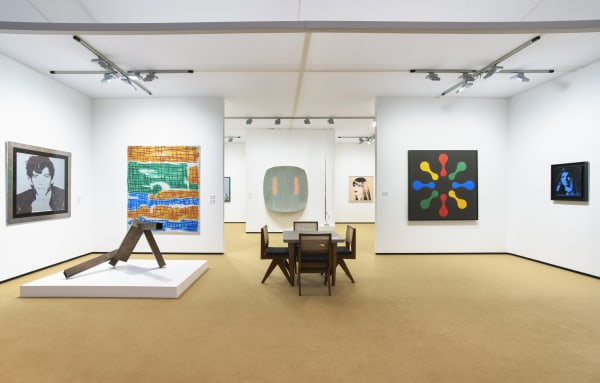
Frieze Masters 2024
9 - 14.10.2024MARUANI MERCIER is delighted to present a distinguished collection of artworks at Frieze Masters 2024, featuring important pieces by Le Corbusier , Ross Bleckner ,...Read more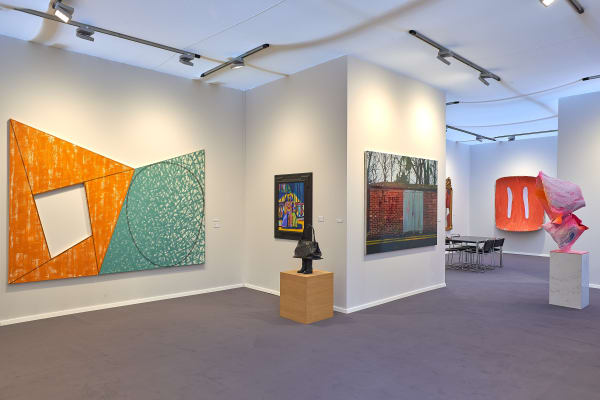
BRAFA 2019
26.01 - 3.02.2019The Brafa Art Fair, created in 1956, is one of the world’s oldest and most prestigious art fairs, famous for the high quality fine art,...Read more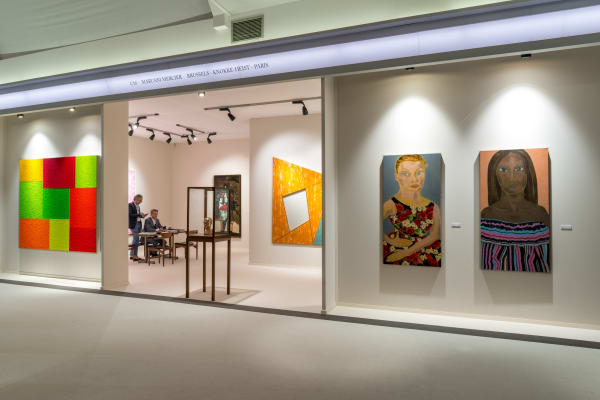
Masterpiece London 2018
28.06 - 4.07.2018Masterpiece London is the unmissable art fair at which visitors can view and buy the finest works of art, design, furniture and jewellery - from...Read more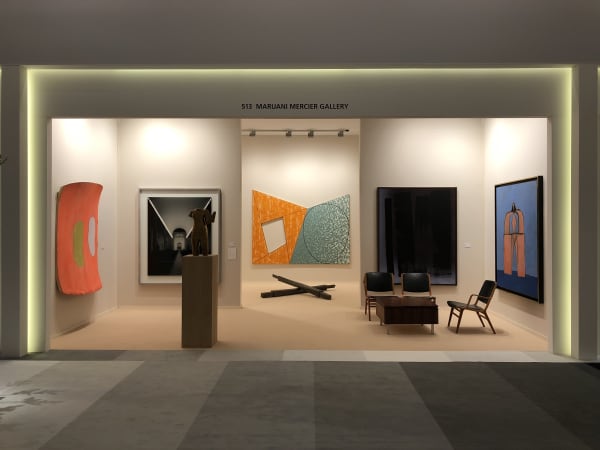
TEFAF 2018
9 - 18.03.2018Established in 1988, TEFAF is widely regarded as the world’s pre-eminent fair of art and antiques. TEFAF champions the finest quality art from across the...Read more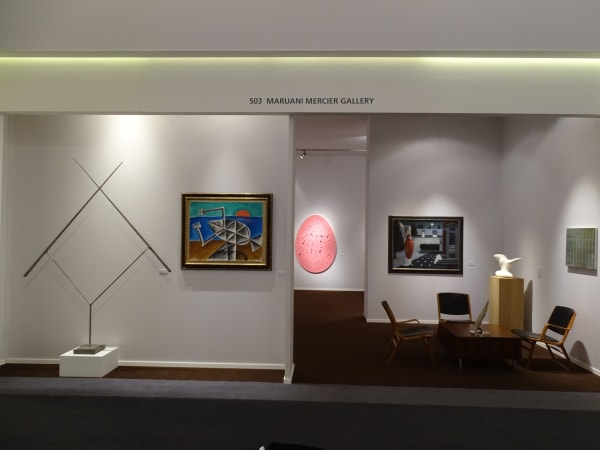
TEFAF Maastricht 2017
10 - 19.03.2017Read more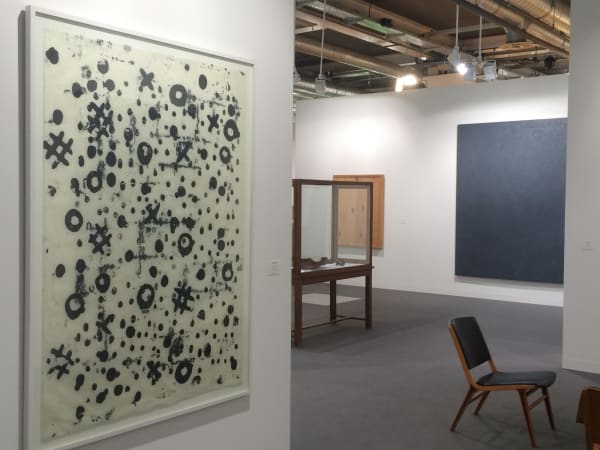
Art Basel 2015
with Jablonka Galerie 17 - 21.06.2015Read more
Join our mailing list
* denotes required fields
In order to respond to your enquiry, we will process the personal data you have supplied to communicate with you in accordance with our Privacy Policy. You can unsubscribe or change your preferences at any time by clicking the link in our emails. This site is protected by reCAPTCHA and the Google: Privacy Policy and Terms of Service apply.







